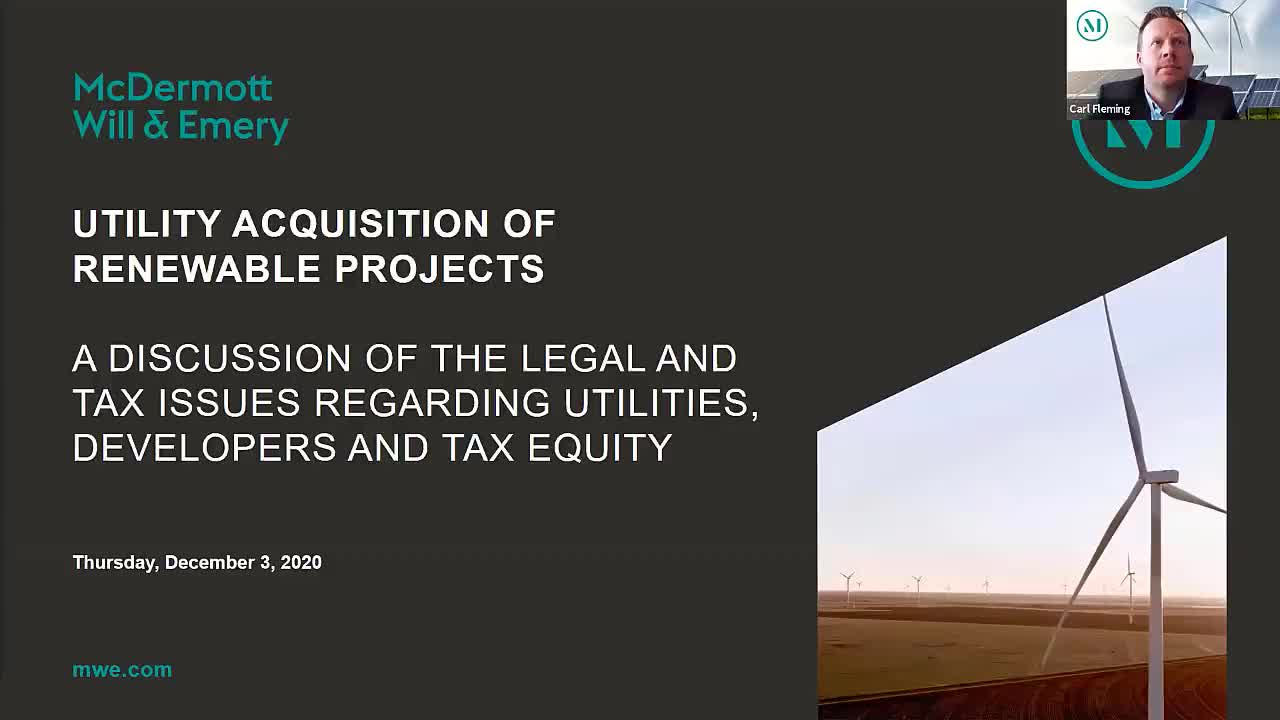Increasingly, utilities are replacing older generation fleets with more cost-effective generation technologies. Renewables are cost-competitive alternatives in this effort for a number of reasons, including the current tax incentives. A utility’s acquisition of a renewable asset presents many issues not otherwise present in a non-utility acquisition, particularly if the utility intends to include its investment in rate base.
In our webinar, we discussed the legal and tax issues associated with renewable energy transactions based on our experience representing both utilities and developers.

Below are key takeaways from this week’s webinar:
- 2021 will bring an increase for the renewable energy industry, despite the effect COVID-19 has had on the market.
- Some issues to consider when creating a tax equity structure that involves a utility are: regulatory investment limitations, related party and normalization considerations.
- Utility build-transfer agreements should be executed well in advance of the notice to proceed. These agreements usually involve classic mergers & acquisitions (M&A) representations and warranties that are made in advance of the project beginning.
- Developers under a build-transfer agreement should consider ways to mitigate risk.
- Timeline is important. A utility will commonly use the interim period between entering into a build-transfer agreement and closing the transaction, to complete tax equity documents and make certain representations and warranties to the tax equity investor.
To begin receiving Energy updates, including invitations to the webinar series, please click here.
read more

 Subscribe
Subscribe
